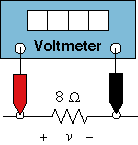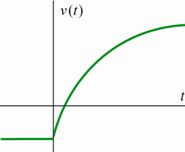Electric Circuits, Circuit Elements, Kirchhoff's Laws
Objectives: We want to be able to
- identify various types of electric circuit: dc, ac and dynamic circuits.
- identify nodes, elements, element parameters, loops and meshes in a circuit diagram.
- write and solve the equations indicated by Kirchhoff's laws.
- write and solve the element equations corresponding to the circuit elements.
- use the passive convention to
- write correct element equations
- distinguish the "power supplied" from the "power received" by a circuit element
Remark: The Kirchhoff law equations for ac circuit require special attention.
Reading: Sections 1.1 thru 1.5, 2.4 thru 2.10 and 3.2
- We analyze electric circuits by writing and solving a set of equations.
- Some of those equation are written using Kirchhoff's laws (Section 3.2).
- The rest of the equations describe the devices that comprise the circuit. These equations are called
"element equations" or "constitutive equations". Ohm's law is the most familiar example of
a constitutive equation. Indeed, the constitutive equations are sometimes informally referred
to as the "Ohm's law equations." Chapter 2 presents constitutive equations for resistors
(Section 2.4), independent sources (Section 2.5), open and short circuits (Section 2.5),
dependent sources (Section 2.7), and switches (Section 2.9).
- The passive convention (Sections 1.2-1.5) is important because
- It's assumed in the element equations.
- It's involved in our vocabulary regarding electric power (see Table 1.5-1).
- Two seemingly different circuit drawings might represent the same circuit. How can we tell?
See Example 3.2-1
Lecture Notes:
Demonstrations: Reference Directions
 |
On-line Exercises:
|
|


